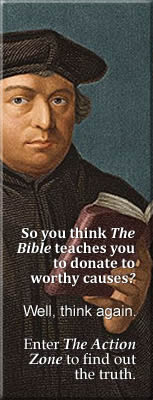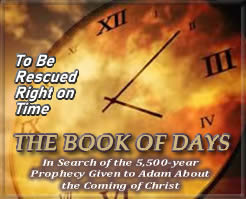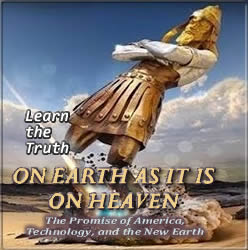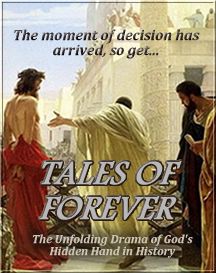Debunking a Myth
Reconciling Twins—Science & Theology
One of the greatest tragedies of the 19th century was the moment when the theory of evolution suddenly enabled mankind to dissect the scientific way of thinking from that of the theological. And ever since that moment, a holy war—a war fought between two entrenched worldviews, each fully convinced in its own version of reality—has been fought by each succeeding generation. Yet, as with most wars, the result has been a catastrophic loss to both sides, though neither one is yet willing to admit it.
Because for all their apparently irreconcilable differences, these two worldviews hold more in common than either would care to admit, a fact which is all but obscured as a result of the incessant posturing and unremitting antagonism. And because neither side seems ready, willing nor able to admit that both sides are, in fact, capable of complimenting the other in their mutual pursuit of truth, the war rages on, with little hope of rescuing the origins of honest inquiry. The result of which is a perpetual misunderstanding of science’s true origins in the history of thought, one which has been, for far too long, disconnected from its original spiritual dimension.
In contrast to this tendency, however, The Lost Stories Channel will continually work toward the rediscovery and retracing of all the various kinds of “lost truths” that are so clearly scattered amongst our common histories and heritages throughout the globe. Above all, we will be guided by the principles and laws of apologetics as well as to basic common sense. One of the simplest ways to provide an insight into the Lost Stories perspective is to go outside, day or night, and look up at the Sun or the Moon, depending on what time it is. Then, imagine the celestial mechanics involved in an eclipse. The Sun is much larger than the moon, yet from our point of view on Earth, the two discs are relatively the same size. But, wait.
Story Continues Below
To hear Kent talk about the little-known biblical prophecy, which speaks of the 5,500-year chronology from Adam to Christ, with Zen Garcia, the host of the Internet talk show Secrets Revealed, CLICK BELOW.
Story Continues From Above
First, stop and think for a moment. Just contemplate how amazing it really is that these two immense objects, when they do cross paths, could actually appear to be the same size. At 865,000 miles in diameter, the Sun is more than ten times larger than our home planet and more than 93 million miles away from us. The Moon, in contrast, is only 2,160 miles wide and about 240,000 miles away.
The sheer improbability alone of the Sun, Moon, and Earth, all hurling through space, each on its own path, yet aligning so accurately, is staggering to conceive when you take the time to try. Then add to that the fact that these alignments are so consistent that calendars can be produced which predict the date of the next eclipse.
An eclipse, then, is a celestial event, which presents the most obvious physical proof of the existence of divine, providential forces.
You may think you are explaining things satisfactorily by pointing out the celestial mechanics involved in an eclipse. You can quantify the masses involved and qualify the data all you want. Try to boil it down to a formula; but all your theorizing will still fall short of the matter.
Something amazing, and beyond our comprehension, is keeping us from spinning off into oblivion, and just to remind us periodically along the way, there will be those ever-present celestial wake-up calls to remind us of our ultimate destiny in the Heavens, beyond our selves and beyond our merely Earthbound view of things.
So, already within everyone’s practical, daily experience, in this case, the Sun and the Moon, is actually a “lost story” just waiting to be told, a story which reveals truth that is “hidden in plain sight.” By simply stating the obvious, The Lost Stories Channel will provide an ever-present reminder of these “perpetual” facts which have been lost to our daily way of thinking. By pointing to such obvious facts, and bringing them to their logical conclusion, we’ll attempt, in an initial way, to begin categorizing the power of “the Obvious.”
By providing enough empirical evidence, The Lost Stories Channel will lay, brick by brick, a foundation for an understanding of many things that science deems unfathomable to human scrutiny (e.g., the proof of God’s existence, the laws of spiritual domains, etc.). Because of the limitations of human cognition, only a thorough, broad-based analysis of specific evidence, book by book, and category by category, could ever provide the necessary frame of reference.
That’s why nothing presented on The Lost Stories Channel should ever be seen or understood in isolation. This overview approach to the information will provide an ever-increasing awareness of God’s control over an apparently reckless stream of events. In this way, the presumed coincidences of Western history, and, in fact, world history, can no longer be seen as a series of mere coincidences.
By creating a website dedicated to codifying this type of knowledge, we have a brand-new way to approach an age-old problem. Spawned in an electronic information age, The Lost Stories Channel is a place where people can be involved in an ongoing digital dialog spanning the globe, a place where everyone everywhere can take an active part in assembling the clues we all have at our disposal, as we try to solve some of the greatest mysteries of the Universe.






